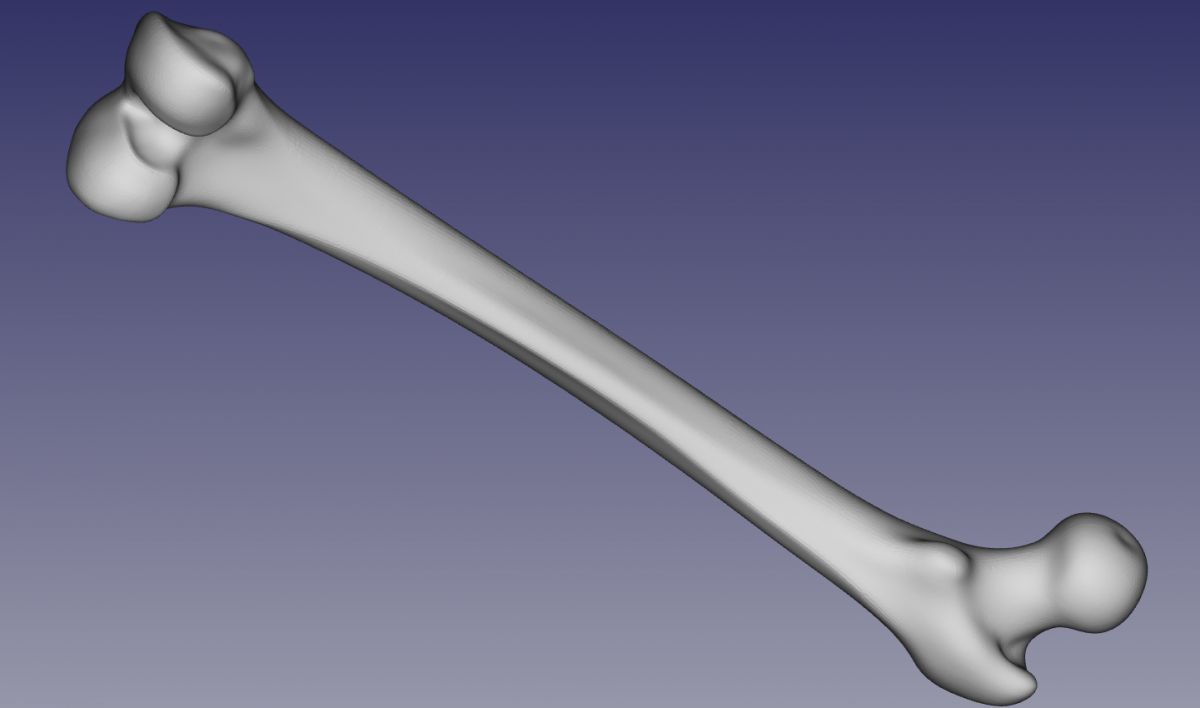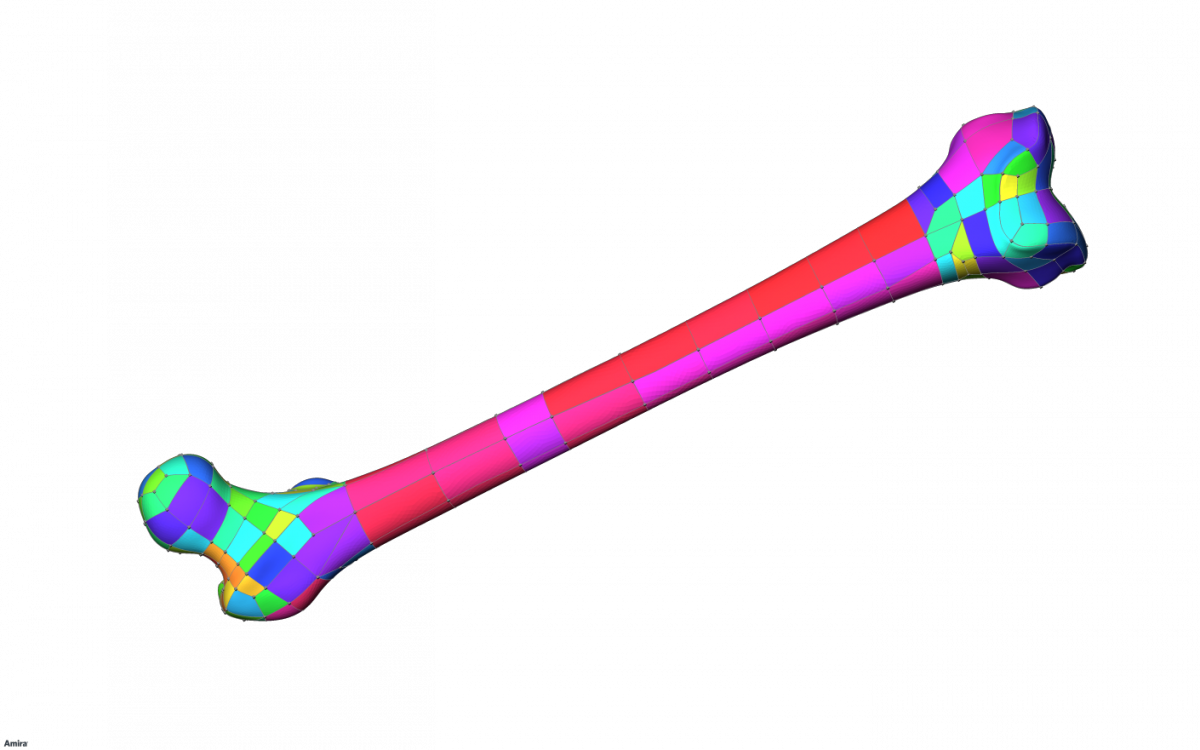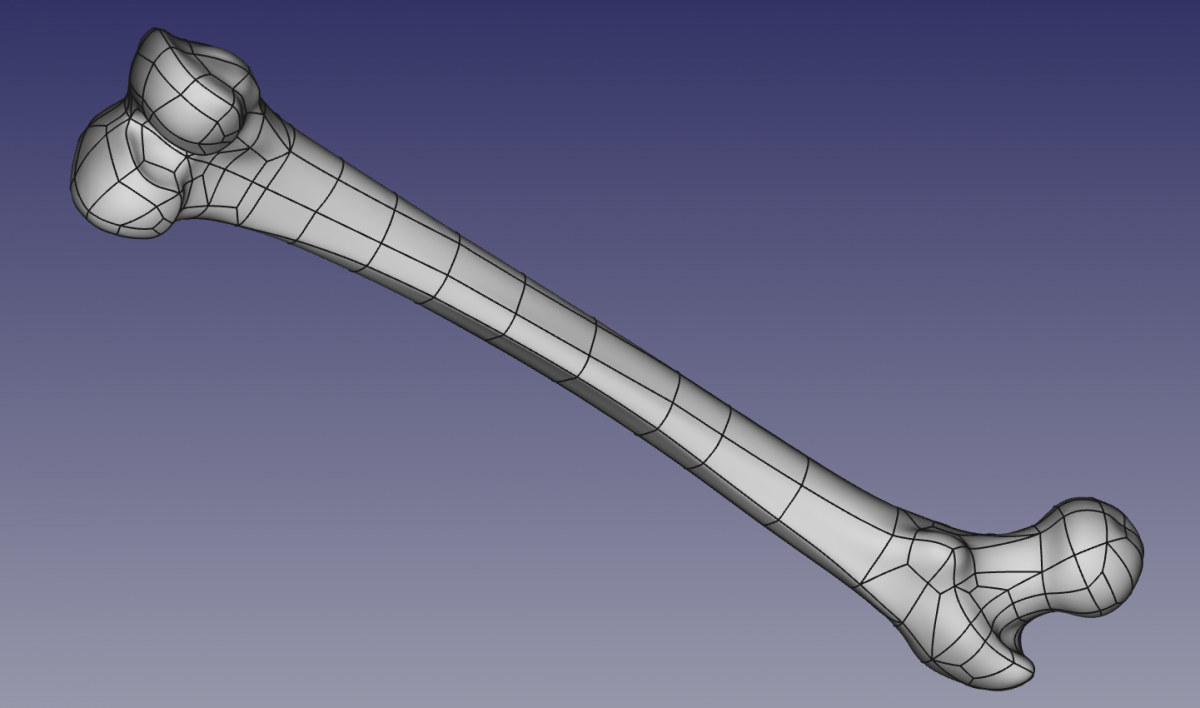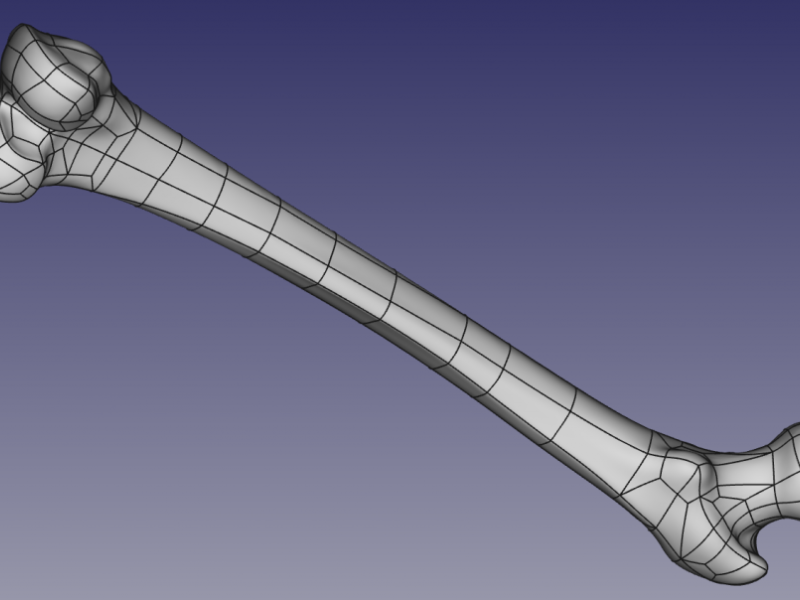Computer Aided Design (CAD) and Computer Aided Geometric Design (CAGD) are used heavily in the representation of three-dimensional objects. Other than the areas of civil and mechanical engineering the methods from these fields are increasingly being used in the field of Medical Technology for the planning and production of medical tools and implants. It is important that the medical components (e.g., the surgical cutting blocks) be described with respect to the geometry of the anatomical structures (e.g, teeth, bones, organs, etc) so as to determine the the appropriate shape, size and position of the component.
Anatomical structures are reconstructed from patient-specific medical images (CT computed tomography or magnetic resonance imaging, MRI). It depends primarily on an accurate representation of the structures of a patient. Therefore these discrete surface models (so-called meshes, triangulations) are used in practice, as these are not only geometrically flexible but also can be stored efficiently and displayed.
In CAD systems however 3D objects are described as smooth parametric surfaces(non-uniform rational B-Splines, NURBS). It is important for the storage and processing, to keep the complexity of NURBS low. In order to integrate anatomical structures in CAD systems, meshes need to be converted to NURB surfaces. Existing CAD systems often produce anatomical structures that :
(i.) often require too much memory for efficient processing or
(ii.) are inconsistent, and therefore require manual post-processing.
The goal of this project is to conduct a feasibility study of available methods and software that assist in the automatic conversion of meshes into NURBS for anatomical structures and develop a prototype implementation.
Inital point cloud of the Femur.
 Triangulation of the point cloud of the Femur.
Triangulation of the point cloud of the Femur.
 Quadrilateral Patch of the triangulated Femur.
Quadrilateral Patch of the triangulated Femur.
 NURBS surface approximation of the Quadrilateral Patches
NURBS surface approximation of the Quadrilateral Patches
